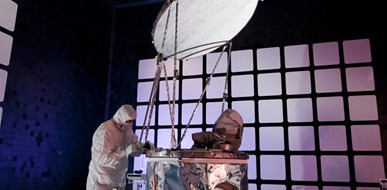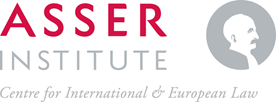[New course] Using satellite imagery as evidence in international judicial proceedings
Published 18 March 2024
The GPM Microwave Imager (GMI) undergoes electromagnetic interference and compatibility testing at Ball Aerospace & Technologies Corp. Credit: NASA / Ball Aerospace
An innovative training course on using satellite imagery as evidence in international judicial proceedings has been launched by UNITAR-UNOSAT, the Asser Institute, the Geneva Science-Policy Interface (GSPI) and IUSTICOM. Legal professionals working with international justice organisations are the first beneficiaries of the course concerning technical and legal requirements of using satellite images as evidence in court.
Satellite images are often the only way to prove that human rights abuses and atrocities have happened, especially in hard-to-reach places. These images can help with investigations and be used as evidence in court.
Knowledge gap
As satellite imagery is a relatively new source of information and evidence in criminal proceedings, many professionals in the international criminal justice system (judges, lawyers, and defence and victims' attorneys) have limited experience with its use. Many satellite imagery analysts, on the other hand, have no experience with the criminal justice system.
To close this knowledge gap, UNITAR-UNOSAT, the Asser Institute and IUSTICOM – with support from the Geneva Science-Policy Interface (GSPI) – have developed the online training course, with the aim of maximising the positive impact of using satellite imagery in court in the pursuit of justice.
In February 2024, participants from the realm of international justice participated in the online training course concerning the technical and legal specificities of using satellite image acquisition in the context of international judicial proceedings, and how satellite imagery analysis can be used to identify and understand violations of international human rights and humanitarian law. The course also addressed the issue of obtaining assistance from satellite imagery experts, such as those at the United Nations Satellite Centre (UNOSAT), a part of the United Nations Institute for Training and Research (UNITAR)
In response to this project, UNOSAT Officer-In-Charge (and UNITAR Director of the Division for Prosperity) Mihoko Kumamoto says, “UNOSAT has for some time engaged in work that is vital to operations within the international justice system. In collaboration with our esteemed partners, this project brings together a chance to share mutual expertise for the sake of building interdisciplinary understanding. By cultivating this within the context of capacity-building, UNOSAT hopes this work will serve as a testament to the mutual benefit that can be wrought by bridging the realms of geospatial information technology, and legal knowledge and practice”.
In addition to this, "we hope this course allows others to build off and learn from the experiences of UNOSAT with regards to international legal proceedings", says UNOSAT project leader Lars Bromley, who aims for satellite imagery to become an easy-to-use and an oft relied-upon resource for the international criminal justice system.
For more information about the course, please refer to the project information page here: https://unitarunosat.wixsite.com/gspi-icc
In partnership with
and
The project has benefited from support by:





